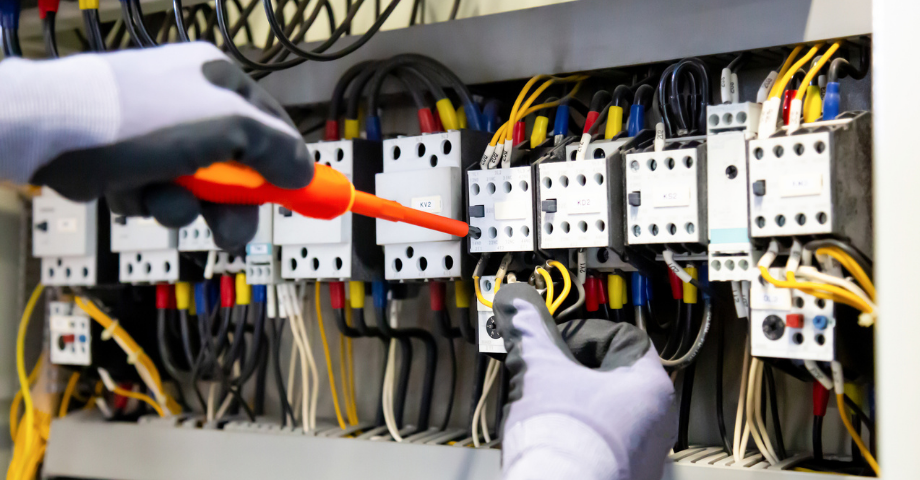
System uptime plays a huge role in creating a competitive advantage for data centers. One of the key factors in minimizing downtime and providing uninterrupted service is maintaining a reliable power distribution system.
Switchgear—a term that collectively describes the equipment used to control, regulate, and switch circuits on and off in an electrical system—historically functioned mainly as short-circuit protection. Thanks to the raging demand for capacity, today’s data center switchgear is evolving into a critical component in supporting high availability for data center tenants.
In a modular data center, low-voltage distribution switchgear acts as a larger version of the circuit breaker panel in a home: Power enters the data center through switchgear and is routed and rerouted to distribute the load between power sources as needed. In the event of a power failure, distribution switches from utility to backup power, to minimize or prevent downtime.
How Switchgear Requirements Are Different in Data Centers Compared with Commercial Buildings
One of the biggest differences between power distribution in commercial structures versus modular data centers is the level of impact a power outage will have on the business.
In today’s data fixated world, data centers can be reasonably classified as “critical” service providers, which isn’t necessarily true for the majority of other commercial enterprises. As a critical service provider, ensuring all systems stay up and running is crucial both for the data center tenants’ customers and the data center’s bottom line.
To maintain the required level of uptime and availability, switchgear is used to build in a much higher level of redundancy in data centers than is needed for the average commercial building. For example, noncritical facilities normally use open transition switches. During this type of power transfer, the transfer switch breaks its connection with one power source before connecting with another source, which may result in a brief power outage and a bit of downtime.
Data centers and other critical facilities, on the other hand, use closed transition switches because they provide a seamless transfer from one power source to another. Closed transitions involve momentarily overlapping generator backup and utility, or uninterruptible power supply (UPS) power so there are no discernable disruptions to services and applications.
How Switchgear Is Evolving to Meet Growing Capacity Demands
Today’s users not only generate a huge amount of data, but they also expect the systems and applications they rely on to be available at all times.
To keep up with skyrocketing demand for data storage and capacity, data center switchgear is evolving from essentially an on/off switch to an interactive, adaptive data protection solution that works in concert with other power distribution components for optimal system performance and data availability.
For example, in a modular data center fitted with modern switchgear capabilities, when the utility power goes out, the UPS kicks in to keep the servers running and ensure mission-critical systems, such as cooling and fire suppression, remain functional.
In the meantime, the backup generators are activated, and when they are ready, the automatic transfer switch initiates a power transfer from the UPS to the backup source.
New data center switchgear technology is also designed to lower the cost and effort required to maintain the equipment and provide a layer of protection for the rest of the systems.
For example, the addition of shielded solid insulation to switchgear prevents damage from internal arching, while also protecting the system from environmental threats such as water, dust, and weather.
Switchgear Limitations in Modular Data Centers and How PCX Can Help
The only real problem when it comes to including the most current iterations of switchgear in modular data center manufacturing is the fact that it’s hard to get ahold of. Data center capacity is at an all-time high, making lead times on some of the most sought-after components extensive and prohibitive.
PCX has an advantage in the market because we recognized the limitations of the supply chain early and have taken steps to ensure the latest switchgear technology isn’t out of reach for our clients.
With dedicated facilities, access to industry experts, and a commitment to looking outside the box for switchgear alternatives, PCX provides modular data center design and configuration to support a broad range of power distribution needs.
Download The Complete Guide to Modular Data Center Solutions to learn how this alternative to traditional stick-built construction removes many of today’s supply chain obstacles, so you can grow capacity and meet client demand.




Comments